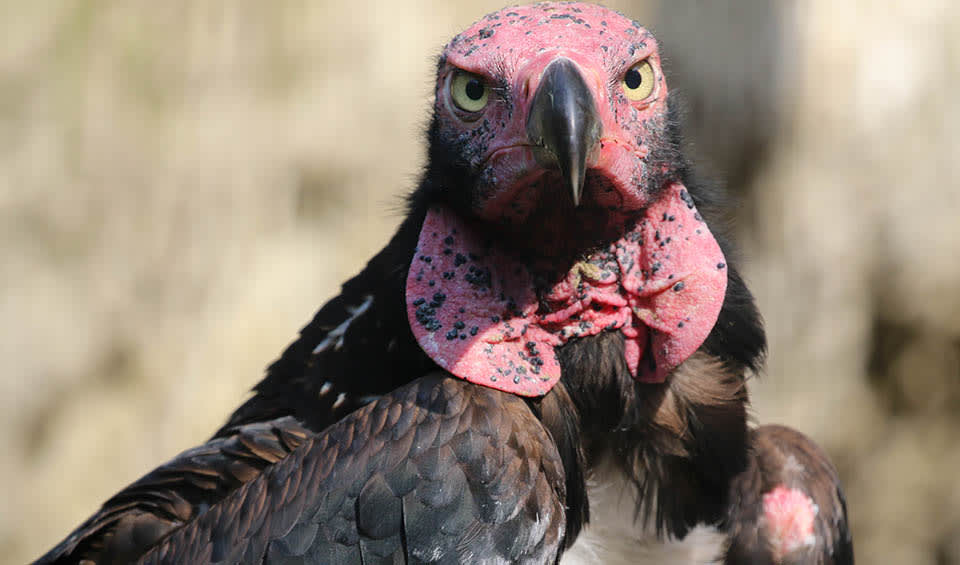Also known as the Asian king vulture or the Indian black vulture, it is a striking bird of prey native to the Indian subcontinent and parts of Southeast Asia. This vulture is easily identifiable by its deep red or orange head and neck, which are devoid of feathers, contrasting sharply with its predominantly dark body.
One of the most distinctive physical characteristics of the red-headed vulture is its robust and hooked beak, which is incredibly strong and efficient for tearing meat. Unlike some other vulture species that are scavengers, the red-headed vulture often arrives first at a carcass, asserting dominance over smaller scavengers. This bird has a relatively short tail and long, broad wings, which aid in its soaring flight and ability to glide effortlessly for hours while searching for food. Its eyesight is extraordinarily keen, enabling it to spot a potential meal from great distances.
The red-headed vulture’s diet primarily consists of carrion, which includes the remains of dead animals. This dietary preference plays a crucial ecological role, as it helps in the natural disposal of dead animals, thereby preventing the spread of disease. Occasionally, they may consume smaller live prey such as reptiles or fish, showcasing their opportunistic feeding behavior.
Like many vultures, when overheated, it employs a unique behavior known as urohidrosis, where it urinates on its legs. The evaporation of the urine helps to cool the bird in the hot climates it often inhabits. This efficient, albeit odd, cooling mechanism is just another of the fascinating adaptations of the red-headed vulture.
Sadly, the red-headed vulture is critically endangered, with its population experiencing a drastic decline over the past few decades. This decline is largely due to the use of the veterinary drug diclofenac, which is toxic to vultures and found in the carcasses of treated livestock. The drug causes kidney failure in vultures, leading to a rapid decline in their numbers.
Distribution
 Bangladesh
Bangladesh Bhutan
Bhutan Cambodia
Cambodia China
China India
India Laos
Laos Malaysia
Malaysia Myanmar
Myanmar Nepal
Nepal Pakistan
Pakistan Thailand
Thailand Vietnam
VietnamDid you know?
- A major cause of the sharp decline in Red-headed Vulture populations in the 21st century is the use of the pharmaceutical NSAID diclofenac to treat livestock. This drug is extremely toxic to vultures, causing death from renal failure and visceral gout.
- Recent findings suggest that Red-headed Vulture populations in India are recovering after a ban on diclofenac, indicating the drug’s harmful impact on the species.
Anything we've missed?
Help us improve this page by suggesting edits. Glory never dies!
Suggest an editGet to know me
Terrestrial / Aquatic
Altricial / Precocial
Polygamous / Monogamous
Dimorphic (size) / Monomorphic
Active: Diurnal / Nocturnal
Social behavior: Solitary / Pack / Herd
Diet: Carnivore / Herbivore / Omnivore / Piscivorous / Insectivore
Migratory: Yes / No
Domesticated: Yes / No
Dangerous: Yes / No




